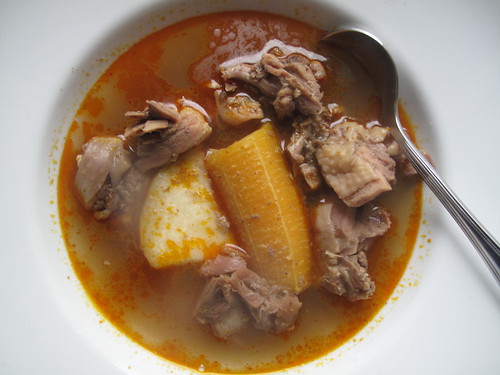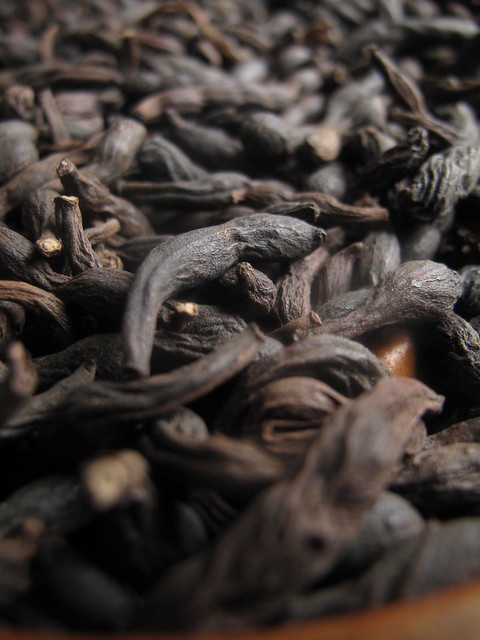

Xylopia Aethiopica. A smoked spice similar to black cardamom, which is traditionally dried over open flames. Also known as negro pepper and grains of selim, Ethiopian pepper (Pipper Aethiopila), Senegal pepper. These are (clusters of) black, often long-stemmed pods, which sort of resemble bean pods.
They are full of seeds which sculpt and contour the pods.
Antimicrobial Activity of Essential Oils of Xylopia Aethiopica
Xylopia aethiopica is a medicinal plant of great repute in West Africa which produces a variety of complex chemical compounds. The fresh and dried fruits, leaf, stem bark and root bark essential oils showed various degrees of activity against the Gram positive bacteria, Bacillus subtilis and Staphylococcus aureus, the Gram negative bacteria Pseudomonas aeruginosa and the yeast-like fungus Candida albicans, using the cup plate method,. However, none of the oils showed activity against Escherichia coli.
Antimicrobial activity of the essential oils of X aethiopica
Results and Discussion
In a recent review, X. aethiopica was shown to have a wide range of biological activities including insecticidal, anti-tumour, anti-asthmatic, anti-inflammatory, antimicrobial, hypotensive and coronary vasodilatory effects, and these were attributed to the wide variety of secondary metabolites in the plant (Fleischer, 2003). In this study, all the morphological parts of the plant (fruit, leaf, stem bark and root bark) yielded varying amounts of essential oils, with the fresh fruits and the leaves providing the highest and the lowest yields respectively. All the oils showed various degrees of inhibitory activity against the test organisms except for E. coli which was not sensitive to any of the oils (Table 1). Staph. aureus was the most sensitive organism, while B. subtilis and C. albicans showed the least sensitivity in this study. Comparatively, the oil of the fresh fruits showed slightly higher activity than that of the dried fruits except in the case of Staph. aureus. This validates the use of the dried fruits in various disease conditions by traditional health practitioners which is readily obtainable from local markets.
Among the conditions treated with X. aethiopica in traditional medicine are cough (fruits and roots) bronchitis, dysentery and biliousness (fruits and stem bark) and boils and sores (leaves and bark) (Irvine, 1961; Usher, 1974;Burkill, 1985; Ghana Herbal Pharmacopoeia, 1992; Mshana et al., 2000). The results in this study suggest that the oils of the fruits, leaves, stem and root barks contribute significantly to the antimicrobial properties of the plant parts, and give credence to the use of these parts in the treatment of the disease conditions cited above. The insensitivity of E. coli to the oils confirms previous reports (Boakye - Yiadom et al.,. 1977; Okibgo et al., 2005) and further suggests that the essential oils of X. aethiopica will not be useful in the treatment of diseases caused byE. coli. In our previous report (Karioti et al., 2004), we showed clear variation in the composition of the oils but this was not apparent in the results of the antimicrobial activity. To our best knowledge, this is the first report on the antimicrobial activity of the essential oils of the fresh fruits, leaves, and stem and root barks of X. aethiopica.
References
1. Adewoyin F B, Odaibo A B, Adewunmi C O. Mosquito repellent activity of Piper guineense and Xylopia aethiopica fruits oils on Aedes aegyptii. Afr J Trad, CAM. 2006;3(2):79–83.
2. Asekun O T, Adeniyi B A. Antimicrobial and cytotoxic activities of the fruit essential oil of Xylopia aethiopicafrom Nigeria. Fitoterapia. 2004;75:368–370. [PubMed]
3. Boakye-Yiadom K, Fiagbe N I Y, Ayim J S K. Antimicrobial properties of some West African Medicinal Plants. IV. Antimicrobial activity of xylopic and other diterpenes from the fruits of Xylopia aethiopica(Annonaceae) Lloydia. 1977;40:543–545. [PubMed]
4. Burkhill H M. Useful Plants of West Africa. 2nd edn. Vol. 1. Royal Botanic Gardens, Kew: 1985. pp. 130–132.
5. Evans C. Trease and Evans Pharmacognosy. 13th Edition. W . B. Saunders; 2003. pp. 253–288.
6. Fleischer TC. Xylopia aethiopica A Rich.: A chemical and biological perspective. J Univ Sci Technol.2003;23:24–31.
7. Ghana Herbal Pharmacopoeia, author. Policy Research and Strategic Planning Institute (PORSPI) Accra: The Advent Press; 1992. pp. 150–152.
8. Hammer K A, Carson C F, Riley T V. Antimicrobial activity of essential oils and other plant extracts. J Appl Microb. 1999;86:985. [PubMed]
9. Irvine F. Woody Plants of Ghana. London: Crown Agents for Overseas Administration; 1961. pp. 23–24.
10. Karioti A, Hadjipavlou-Latina D, Mensah M L K, Fleischer T C, Skaltsa H. Composition and Antioxidant Activity of the Essential Oils of Xylopia aethiopica (Dun) A. Rich. (Annonaceae) Leaves, Stem Bark, Root Bark and Fresh and Dried Fruits, Growing in Ghana. J Agric Food Chem. 2004;52:8094–8098. [PubMed]
11. Mshana N R, Abbiw D K, Addae-Mensah I, Adjanouhoun E, Ahyi M R A, Ekpere J A, Enow-Orock E G, Gbile Z O, Noamesi G K, Odei M A, Odunlami H, Oteng-Yeboah A A, Sarpong K, Sofowora A, Tackie A N.Traditional Medicine and Pharmacopoeia, Contribution to the revision of ethnobotanical and Floristic Studies in Ghana. 2000. OAU/STRC Technical Report, 67.
12. Okigbo RN, CS Mbajiuka, Njoku CO. Antimicrobial Potentials of (UDA) Xylopia aethopica and Ocimum gratissimum L. on Some Pathogens of Man. Intern J Mol Med Advance Sci. 2005;1(4):392–397.
13. Schelz Z, Molnar J, Hohmann J. Antimicrobial and Plasmid activities of essential oils. Fitoterapia.2006;77:279–285. [PubMed]
14. Tatsadjieu LN, Essia Ngang JJ, Ngassoum MB, Etoa FX. Antibacterial and antifungal activity of Xylopia aethiopica, Monodora myristica, Zanthoxylum xanthoxyloides and Zanthoxylum leprieurii from Cameroon.Fitoterapia. 2003;74:469–472. [PubMed]
15. Thomas O O. Re-examination of the antimicrobial activities of Xylopia aethiopica, Carica papaya, Ocimum gratissimum and Jatropha curcas. Fitoterapia. 1989;60:147–156.
16. Usher G. A Dictionary of plants used by man. Prescot, Lancs: Tinling Ltd.; 1974.
No comments:
Post a Comment